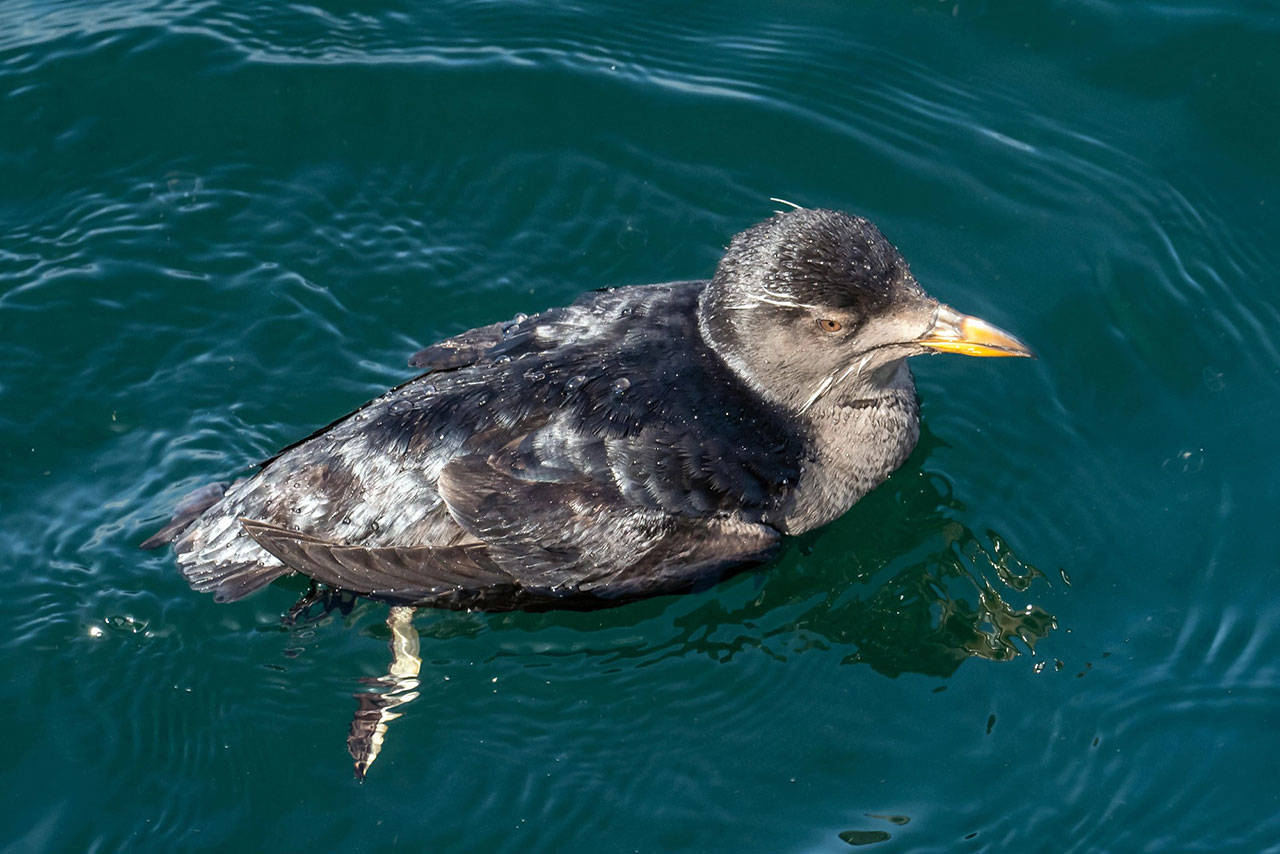A confession: I have never seen one of these alive, only dead ones on the beach. Now that I am more mobile (hip surgery) I want to find one, preferably in breeding plumage. This photo shows one beginning the change into breeding plumage, taken last March.
General Description: Named for the vertical “horn” it develops during breeding phase, the “Rhino” Auklet is a mid-sized mostly pelagic seabird of the north Pacific waters and western coastlines. At just over 11 inches long, with a wingspan of 23 to 24 inches, and weighing between 12 and 22 ounces, this auklet also develops two white plumes behind the eyes and an orangish-yellow bill in both sexes. As is common with seabirds, the back is dark and the breast and belly light-colored.
Habitat: These birds feed close to shore or around islands where the currents create upwellings and concentrations of food. They are likely to overnight in large flocks in protected waters then head out to sea to forage during the day. Their breeding colonies are usually grassy, shrub-covered islands where they can build burrows on a slight slope to give them a boost taking off downhill.
Behavior: Rhinoceros Auklets are better swimmers than flyers, using their short powerful wings as flippers to propel them through the water, often staying under for up to two minutes. Not much is known of their nesting colony behaviors as they are mostly nocturnal on land to evade food-stealing and harassment behaviors by other birds.
Diet: The bulk of their diet is mostly small fish but they also eat crustaceans and cephalopods, especially squid.
Nesting: Ground burrows are dug on both forested and non-forested islands, reaching up to 20 feet in length and often with many forks. Each burrow ends with a shallow nest of twigs and moss where both parents incubate one egg for 5-1/2 to 7-1/2 weeks. The chick leaves the nest at seven or eight weeks.
Migration: Although there is a considerable overlap between summer and winter ranges, Rhinoceros Auklets do migrate more than most alcids, with most northern breeding birds migrating to California. However there are many which overwinter off the coast of Washington.
Conservation: Although there are indications the population is increasing on the west coast, these birds are very susceptible to nest disturbance during breeding season and will abandon the nest if disturbed, egg or chick not-withstanding. Nests are often raided by mammals like raccoons where present, and tunnels can collapse if somewhere where humans walk. They are also vulnerable to gill nets, oil spills and our changing (warming) weather events.
When and Where to Find on Grays Harbor: Rhino Auklets can be seen around islands off the Washington coast or in quiet bays from February through September. Ninety percent of the U.S. population south of Alaska make Washington islands their home, so we should be able to find one. I’ll be out there soon!


